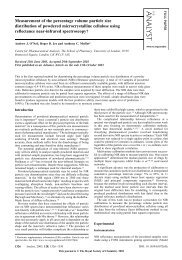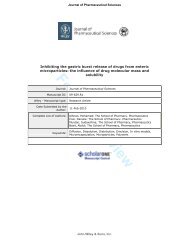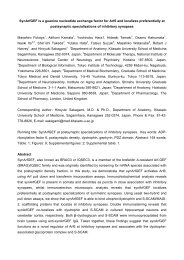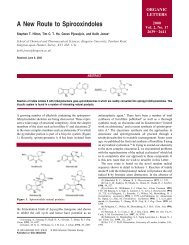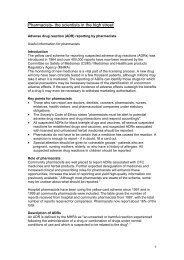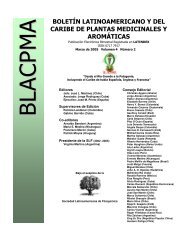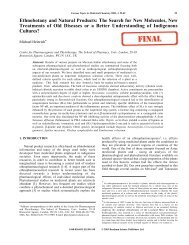Inhaler technique in Turkish people with poor English: a case of ...
Inhaler technique in Turkish people with poor English: a case of ...
Inhaler technique in Turkish people with poor English: a case of ...
Create successful ePaper yourself
Turn your PDF publications into a flip-book with our unique Google optimized e-Paper software.
110 Pharm World Sci (2006) 28:107–114<br />
Table 3 Subject details<br />
<strong>Inhaler</strong>-shak<strong>in</strong>g (counts) and length <strong>of</strong> <strong>in</strong>spiration<br />
(seconds) were assessed directly from the videotape<br />
record<strong>in</strong>gs. The variable ‘‘breath<strong>in</strong>g-<strong>in</strong>’’ was<br />
def<strong>in</strong>ed as the time <strong>in</strong>terval between start<strong>in</strong>g to<br />
breathe <strong>in</strong> and exhal<strong>in</strong>g.<br />
Rater reliability<br />
Intra-rater<br />
Demonstrations from a purposive sample <strong>of</strong> 12<br />
patients, chosen to illustrate the range <strong>of</strong> good<br />
and <strong>poor</strong> <strong>technique</strong>, were rated twice. There was<br />
good agreement between the two data sets<br />
(Global <strong>technique</strong>: Chi-square df 4 P < 0.002;<br />
co-ord<strong>in</strong>ation: kappa 0.795 P < 0.0001).<br />
Inter-rater<br />
All kappa scores for <strong>in</strong>dividual observations were<br />
positive and comparison <strong>of</strong> all observations yielded<br />
a median kappa score <strong>of</strong> 0.5 (quartile range<br />
0.32–0.75). Whilst this demonstrates only a modest<br />
level <strong>of</strong> agreement, assess<strong>in</strong>g breath<strong>in</strong>g patterns<br />
was <strong>of</strong>ten a problem. ‘‘Difficult to assess’’<br />
subjects were equally distributed between groups.<br />
Statistical analysis<br />
Chi-square test (categorical variables) and <strong>in</strong>dependent<br />
t-tests (cont<strong>in</strong>uous normally distributed<br />
123<br />
variables) were used to compare basel<strong>in</strong>e data <strong>in</strong><br />
the <strong>English</strong> and <strong>Turkish</strong> groups.<br />
Global <strong>technique</strong> rat<strong>in</strong>gs before and after<br />
<strong>in</strong>formation were compared and subjects categorised<br />
as improved, no change, or worse.<br />
Chi-square test was used for differences <strong>in</strong> proportions.<br />
The sign test was used for checklist<br />
variables; the paired t-test for <strong>in</strong>haler-shak<strong>in</strong>g<br />
frequency and breath<strong>in</strong>g-<strong>in</strong> time.<br />
Results<br />
Fluent <strong>English</strong><br />
N = 105<br />
<strong>Turkish</strong>-speak<strong>in</strong>g<br />
N =69<br />
Age (years)<br />
Mean +/) sd<br />
Age group<br />
51 +/) 20.9 42 +/) 17.5<br />



